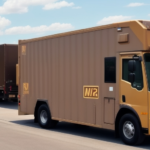How to Correct UPS Shipping Charges for Ground Commercial Shipments
Are you tired of overpaying for UPS shipping charges on your ground commercial shipments? It's a common issue for businesses to miscalculate shipping costs, leading to inflated bills. This comprehensive guide delves into the intricacies of UPS shipping charges for ground commercial shipments and provides actionable steps to rectify any errors.
Understanding UPS Shipping Charges for Ground Commercial Shipments
To effectively correct UPS shipping charges, it's essential to comprehend how these charges are calculated. UPS determines shipping costs based on several factors:
- Weight and Size: The heavier and larger the package, the higher the shipping cost.
- Destination: Shipping to distant or remote locations typically incurs higher fees.
- Distance Traveled: The distance your package needs to cover affects the overall cost.
- Service Type: Different services like Next-Day Air or 3-Day Select come with varying rates.
Additionally, UPS employs a concept known as dimensional weight, which factors in both the size and weight of a package. If the dimensional weight exceeds the actual weight, UPS charges based on the dimensional weight, potentially increasing shipping costs. For more details on dimensional weight, refer to the UPS Glossary.
Common Mistakes in Calculating UPS Shipping Charges
Businesses often encounter errors when calculating UPS shipping charges. Understanding these common mistakes can help you avoid unnecessary expenses:
- Miscalculating Dimensional Weight: Treating dimensional weight as actual weight leads to higher charges.
- Ignoring Additional Fees: Overlooking fees like fuel surcharges, taxes, and other surcharges can inflate your bills.
- Choosing the Wrong Shipping Option: Selecting an expedited shipping service for non-urgent deliveries results in avoidable costs.
- Inaccurate Package Measurements: Incorrectly measuring package dimensions can skew shipping charges.
Identifying Incorrect UPS Shipping Charges for Ground Commercial Shipments
Detecting erroneous UPS shipping charges is the first step towards correction. Here's how you can identify these mistakes:
- Review Invoices: Compare your UPS invoices with the actual weight and dimensions of your shipments.
- Use UPS Billing Analysis Tool: This tool provides a detailed breakdown of your shipping charges, helping you spot discrepancies. Access it through your UPS Billing Center.
- Check Delivery Times: If packages aren't delivered within the guaranteed time frame, you might be eligible for a refund.
- Verify Shipping Services: Ensure you're using the appropriate shipping service for each package to avoid unnecessary expenses.
For more information on UPS refunds, visit the UPS Refund Policy.
Steps to Correct UPS Shipping Charges for Ground Commercial Shipments
If you identify incorrect shipping charges, follow these steps to rectify them:
- Contact UPS Customer Service: Provide detailed information about the discrepancy, including package weight, dimensions, and invoice details.
- Negotiate Shipping Rates: If you’re a frequent shipper, discuss potential discounts or contract rates with UPS representatives.
- Explore Alternative Shipping Carriers: Consider comparing rates with other carriers like FedEx, DHL, and USPS to ensure you're getting the best deal.
- Optimize Your Shipping Process: Consolidate shipments, use efficient packaging, and schedule pickups to minimize costs.
For a detailed comparison of shipping carriers, check out this comparison guide.
Understanding the UPS Shipping Refund Policy
UPS offers a refund policy for ground commercial shipments under specific conditions:
- Late Deliveries: Claim refunds if packages aren't delivered by the guaranteed date.
- Billing Errors: Dispute any inaccuracies in your shipping charges.
- Damaged Packages: File claims for packages that arrive damaged due to UPS handling.
To be eligible for a refund, ensure you:
- Initiate the claim within 15 days of the invoice date.
- Provide necessary documentation, such as proof of actual package weight and dimensions.
For express shipments, UPS offers a Guaranteed Service Refund. If an express package isn't delivered on time, UPS refunds the transportation charges and related fees. However, this guarantee is only applicable to specific services and destinations. Refer to the UPS Guaranteed Service Refunds page for more information.
Additionally, utilize UPS's free package tracking service to monitor your shipments in real-time, allowing you to proactively address any potential issues.
Tips to Avoid Overcharging on UPS Shipping for Ground Commercial Shipments
Preventing overcharges requires strategic planning and attention to detail. Here are some effective tips:
- Accurate Weighing and Measuring: Ensure all packages are correctly weighed and measured to avoid dimensional weight discrepancies.
- Use Appropriate Packaging Materials: Opt for size-appropriate boxes and packaging to minimize dimensional weight.
- Avoid Last-Minute Shipping: Plan shipments in advance to take advantage of standard shipping rates instead of expedited options.
- Utilize UPS Shipping Calculator: Estimate shipping costs beforehand using the UPS Shipping Calculator to budget accurately.
- Consider Flat-Rate Shipping: UPS offers flat-rate shipping options that can be cost-effective for heavy or bulk shipments.
- Negotiate Rates Based on Volume: Businesses that ship in large volumes can negotiate better rates with UPS.
Negotiating Better Rates with UPS for Ground Commercial Shipments
Securing favorable shipping rates with UPS can significantly reduce your shipping expenses. Follow these strategies to negotiate effectively:
- Establish a UPS Account: Having a dedicated UPS account provides access to exclusive rates and services.
- Discuss Contract Rates: Engage with UPS representatives to negotiate contract rates based on your shipping volume and frequency.
- Consolidate Shipments: Combining multiple packages into a single shipment can lead to bulk shipping discounts.
- Monitor Shipping Expenses: Regularly track your shipping costs using the UPS Billing Analysis Tool to identify trends and areas for cost reduction.
For more insights on managing and analyzing shipping expenses, visit the UPS Billing Center.
The Impact of Dimensional Weight on UPS Ground Shipping Charges
Dimensional weight plays a crucial role in determining UPS ground shipping charges. Here's how it impacts your costs and how to mitigate its effects:
- Optimizing Package Size: Use smaller boxes or envelopes to reduce dimensional weight. Efficient packaging not only lowers shipping costs but also minimizes material usage.
- Utilize the UPS Shipping Calculator: Estimate your shipping charges based on both size and weight using the UPS Shipping Calculator.
- Consider Alternative Shipping Methods: Services like UPS SurePost leverage USPS for final delivery, which can be more cost-effective for lightweight packages.
- Strategically Locate Warehouses: Position your warehouses or fulfillment centers closer to major customer bases to reduce shipping distances and costs.
For comprehensive information on UPS Ground shipping rates and times, refer to the UPS Ground Shipping page.
Using the UPS Billing Analysis Tool to Check and Correct Invoices
The UPS Billing Analysis Tool is an invaluable resource for businesses aiming to audit and rectify their shipping invoices. Here's how to make the most of it:
- Accessing the Tool: Log in to your UPS account and navigate to the billing section to find the Billing Analysis Tool.
- Reviewing Invoices: Examine each invoice for accuracy, checking package weights, dimensions, and applied rates against actual shipment details.
- Identifying Discrepancies: Spot any inconsistencies or unexpected charges that could indicate billing errors.
- Initiating Disputes: If you find errors, contact UPS customer service with the necessary documentation to dispute the charges.
- Tracking Shipping Expenses: Use the tool to monitor your shipping costs over time, helping you identify trends and areas for cost optimization.
- Generating Reports: Create detailed reports to gain insights into your shipping patterns and make informed decisions to reduce expenses.
Regular use of the UPS Billing Analysis Tool can lead to significant cost savings and more efficient shipping practices.
Best Practices for Managing Your UPS Account and Invoices
Effective management of your UPS account and invoices is crucial to avoid errors and control shipping costs. Implement the following best practices:
- Regularly Review Invoices: Schedule monthly reviews of your UPS invoices to ensure all charges are accurate.
- Accurately Weigh and Measure Packages: Use reliable scales and measurement tools to provide precise package dimensions and weights.
- Maintain Clear Communication with UPS: Promptly address any discrepancies or questions with UPS customer service.
- Implement a Shipping Policy: Develop internal guidelines for packaging, shipping methods, and cost management to standardize practices.
- Train Staff: Ensure that employees involved in shipping are knowledgeable about UPS policies, packaging standards, and billing procedures.
- Utilize Technology: Integrate shipping software that can automatically calculate accurate shipping charges and streamline invoice management.
By adhering to these best practices, businesses can minimize shipping errors, reduce costs, and enhance operational efficiency.
In Conclusion
Correcting UPS shipping charges for ground commercial shipments involves a thorough understanding of how these charges are calculated and proactive steps to identify and rectify errors. By implementing best practices such as accurate package measurements, diligent invoice reviews, and strategic shipping decisions, businesses can significantly reduce their shipping costs and improve their bottom line.






















